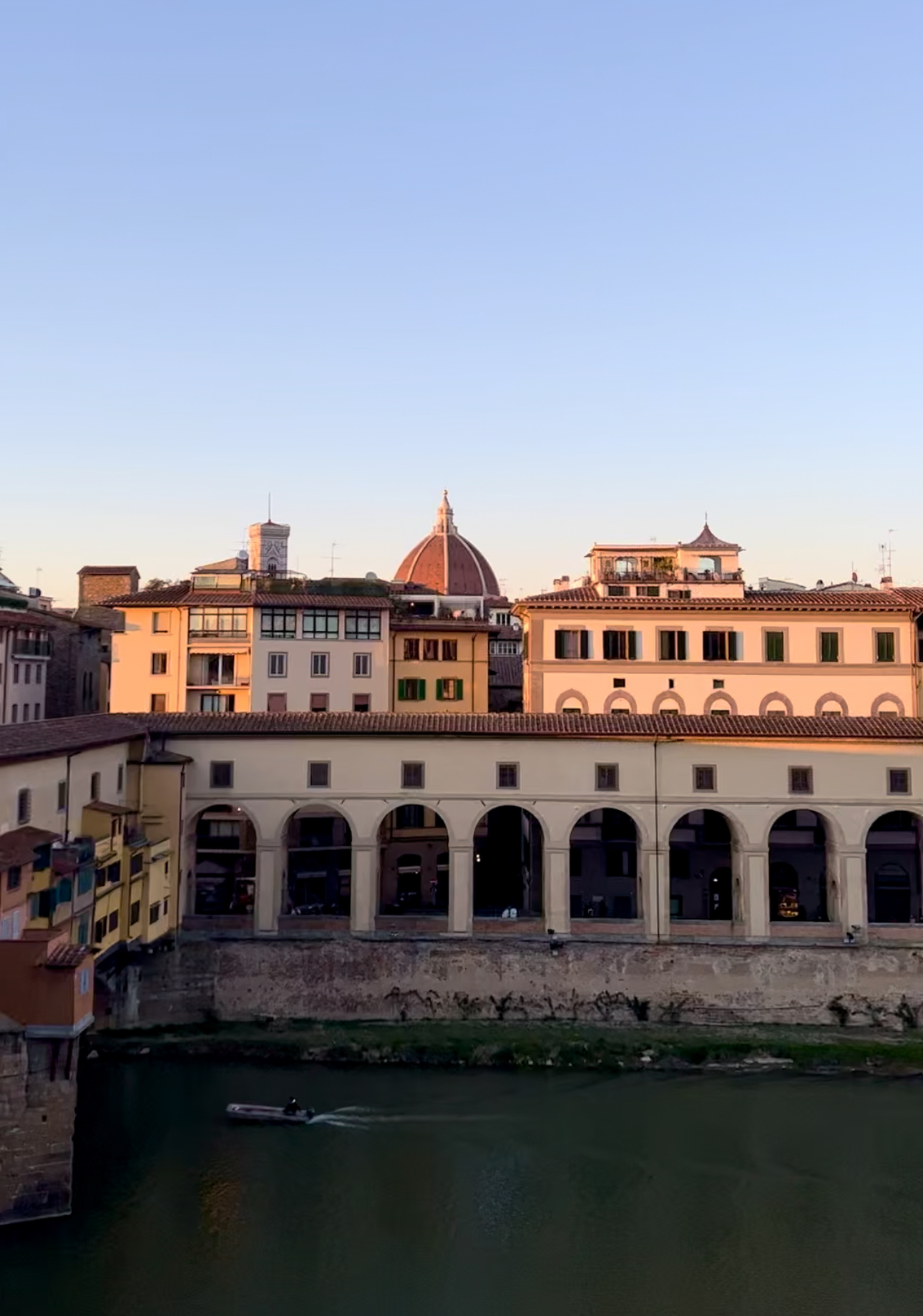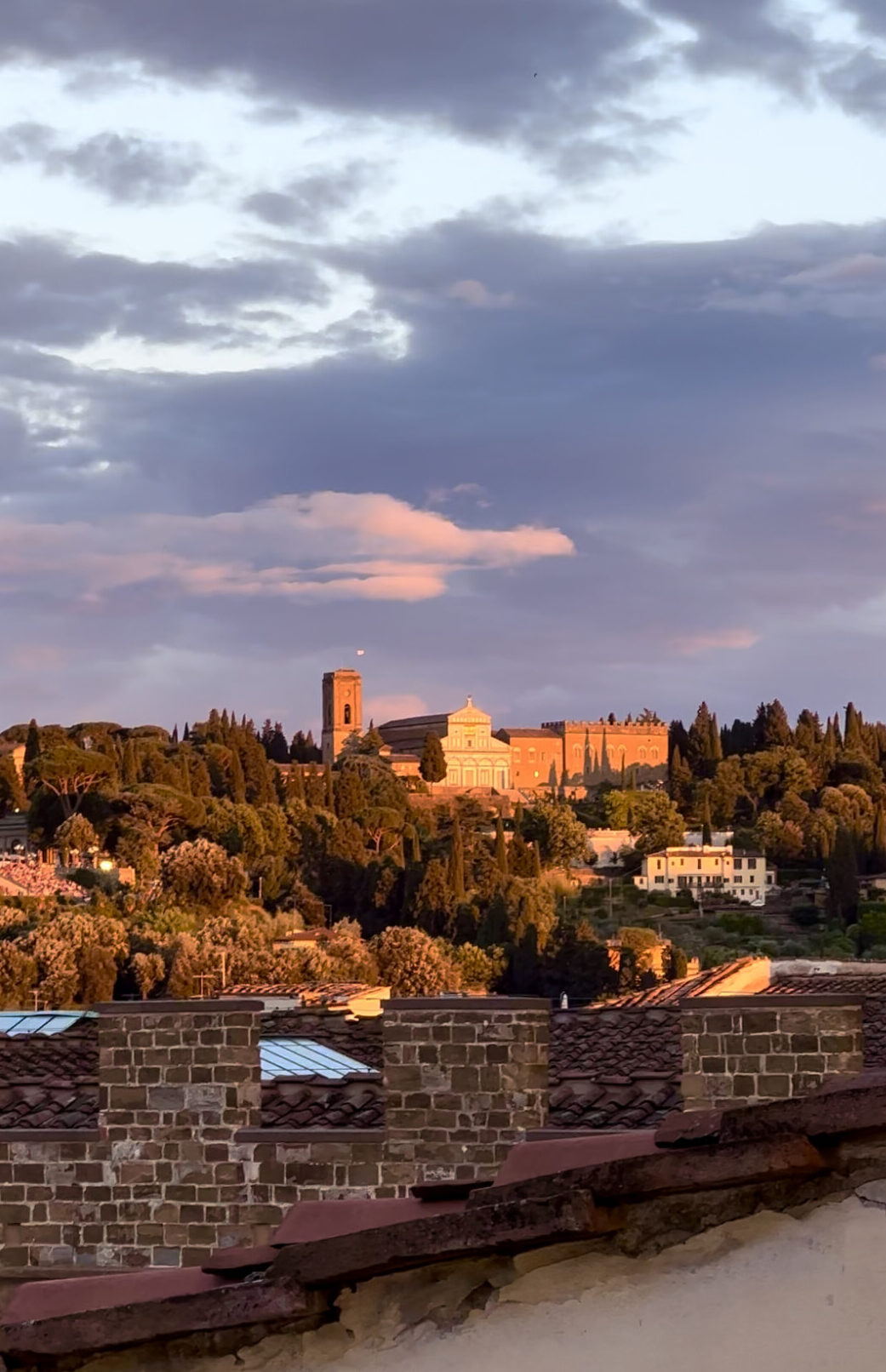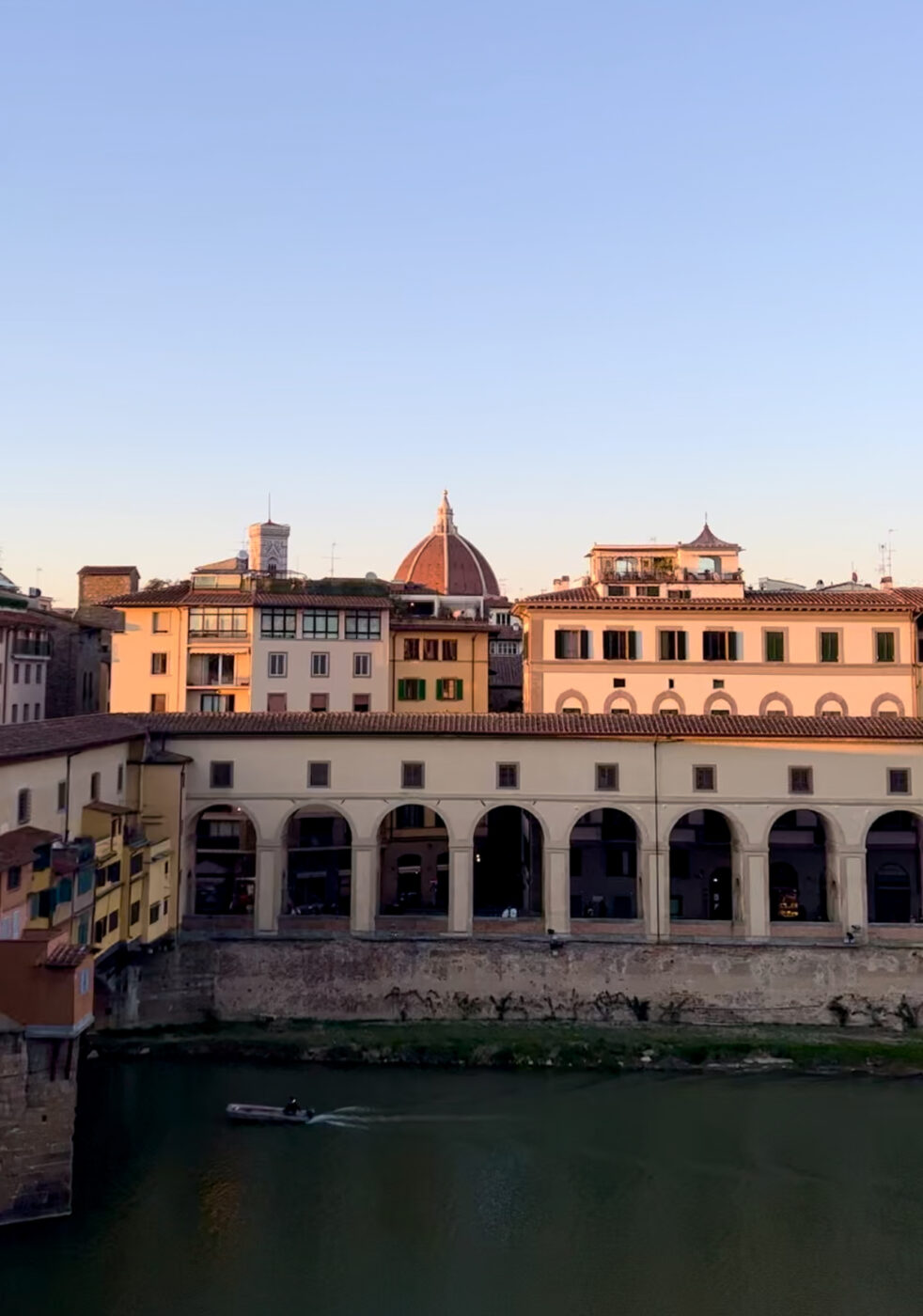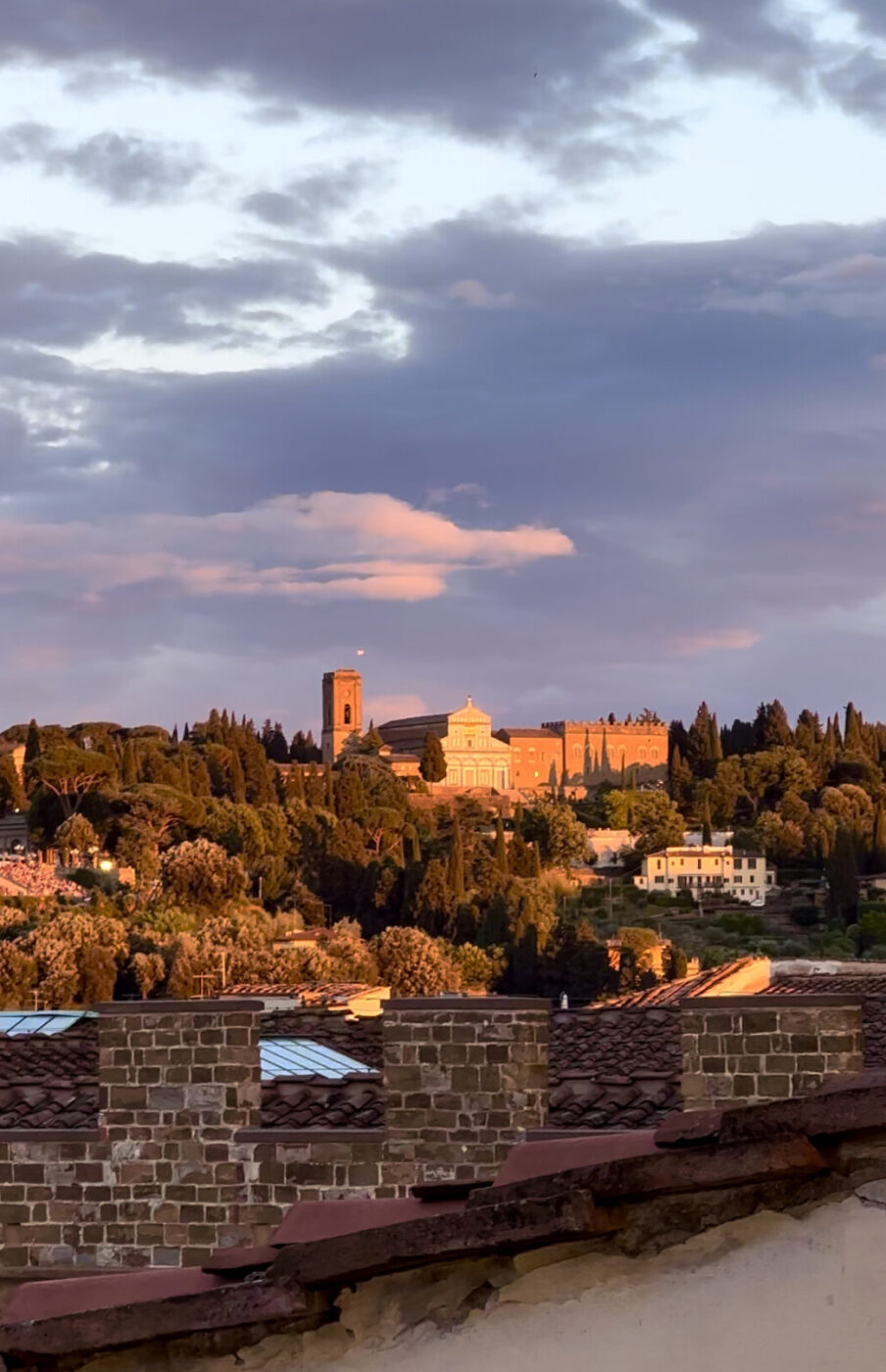If you know where a city is, you know why it exists. If you know why a city exists, you can imagine who wanted to live there. And if you understand what kind of people lived in that city, you will find a straight line to how it looks, how it was decorated, what was valued.
Florence is in a spot that provides protection, via robust hills and rivers, including the Arno; tradesmen and scholars and religious men wanted to live there, and later bankers, artists, and their patrons. The look of Florence springs from solid, handsome buildings of perfect proportions and, always, utility. There is nothing silly in Florence, and that’s why it has lasted.
Originally settled as a northern outpost for Roman soldiers, Florence later became the center of Renaissance art, architecture, and literature for one reason: it was, first, the center of banking. In 1523, just as in 2023, buildings were built and paintings were commissioned because someone had excess money they chose to spend on them.
The most-cited someones with excess money are, of course, the Medici. When you’re guided by endless directional arrows through the Uffizi Gallery’s long coffered corridors and up and down its stone stairwells, imagine the building in its first flush, as an ufficio (office), the people waiting with the hope of getting into the elegant building as the morning wears away not art lovers, but financial supplicants. If they were lucky, they would be granted an audience with a flesh-and-blood Medici, or his delegate; you are fortunate today to be the audience for the exquisitely detailed and gorgeously severe Bronzino portraits of those long-vanished men. It’s commonplace that the first generation makes money, the second generation preserves it, and the third squanders it. Not so with the Medici: you will see Leonardos, Michelangelos, and Botticellis in Florence because Lorenzo, part of the third generation of the family, understood that there was no better or more lasting use of his family’s fortune than to cause sculptures to be chiseled and portraits to be sat for. Had he only spent money on banquets and horses, musicals and hunting parties, draperies and silk velvet doublets with spun silver bouclé–he of course ordered those things also–you would likely not care about visiting Florence today.

That coexistence of commerce and art, permanence and evanescent beauty still defines the city. Florence, in a natural declivity it’s possible to take in–if you’re on the right nearby hilltop–in one glance, accommodates scholars and artisans, students and pensioners, visitors and locals. Rome is an exuberant, chaotic beauty, a city built on millennia of layers of garbage; Milan is handsome and sprawling and tame, a little square. Florence is just right.
If, this summer, you bring your travelers’ dollars to Florence, you’re just bringing money back to its birthplace. Florentines didn’t invent coins or the concept of exchanging a small item of value for a range of goods and services, but they did essentially invent the gold standard–via the coin known all over western Europe after its origin city as the Florin–and the idea that money could be exchanged beyond a region’s borders, that it could be equally valuable in anyone’s hands. In the 14th century, around 150 coin-issuing authorities made their own copies of the Florin, and, even today, Hungary’s currency, the forint, is named for these very gold coins. Imagine trying to travel if your currency were unrecognizable–much less of any value–in the places you wanted to visit; you’d very likely choose to stay close to home.
And if you sit in the Golden View Open Bar at 19:00 and are served a perfectly proportioned Spritz the moment you sit down to the incomparable view of the late-afternoon light reflecting from the necklace of windows that line the Arno, what else are you experiencing but the twinned ideals of Florence: business and beauty, utility and rapture?
In her 1962 Paris Review interview, Mary McCarthy, who wrote Venice Observed and The Stones of Florence, flips that famous saying about Rome and roads 275 kilometers northwest:
“But everything in Venice—in Italy, for that matter—really points to Florence, everything in the Renaissance anyway, like signposts on a road. Whenever you’re near discovery, you’re near Florence.”


